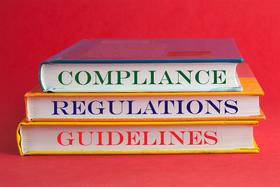I believe that accreditation is necessary for any educational institution. Simply put, accreditation is to a school or college what an academic diploma or degree is to an individual. That objective stamp of approval is earned by meeting a prescribed set of standards. The assessment of whether the school has met those standards is made by independent members of the accrediting organization.
Why is accreditation necessary for a school? Because it confirms that the school is committed to obtaining the best possible outcomes for its students. Parents want to know that they are making the right decision in choosing a private school for their children. Accreditation reassures parents that the school's programs have been evaluated and have met the standards required for accreditation.
Accreditation is typically administered by regional associations which have specific areas of the country under their purview.
Here is a list of the associations together with the states and areas which they cover:
Middle States Association of Colleges and Schools (MSA)
Covers: MSA: Washington DC, Delaware, Maryland, New Jersey, New York, Pennsylvania, Puerto Rico, U.S. Virgin Islands and Overseas
The Northwest Commission on Colleges and Universities (NWCCU)
Covers: Utah, Idaho, Washington, Alaska, Oregon, Nevada, Montana and Costa Rica
North Central Association of Colleges and Schools (NCA)
Covers: Arizona, Arkansas, Colorado, Illinois, Indiana, Iowa, Kansas, Michigan, Minnesota, Missouri, Nebraska, New Mexico, North Dakota, Ohio, Oklahoma, South Dakota, West Virginia, Wisconsin and Wyoming
Covers: Connecticut, Maine, Massachusetts, New Hampshire, Rhode Island, Vermont and Overseas
Southern Association of Colleges and Schools/Commission on Colleges (SACS-CC)
Covers: Alabama, Florida, Georgia, Kentucky, Louisiana, Mississippi, North Carolina, South Carolina, Tennessee, Texas, Virginia and Latin America
Western Association of Schools and Colleges/Accrediting Commission for Community and Junior College
Covers: California, Hawaii, Guam, American Samoa, Federated States of Micronesia, Republic of Palau, Commonwealth of Northern Marianas Islands, Pacific Basin and East Asia
With that in mind let's examine accreditation, see what it entails and understand what it really means to private schools.
Quality assurance
A key component of accreditation is quality assurance. You may believe, even know, that your school provides the best of everything. Academics, athletics, extracurricular activities all flourish to the highest standard in fine facilities. Your experienced teachers have solid credentials and love what they do. Your administration team is a devoted steward of the institution and its heritage both financial and spiritual. Your board offers support, guidance and collective wisdom to all manner of challenges. What more could you possibly want?
Yes. You need that objective evaluation which your institutional peers can provide as you work through the accreditation process. You need the invaluable input which your community will provide as you engage in the critical self-evaluation process.
Quality assurance is an important feature of the accreditation process. Earning accreditation requires meeting the standards laid out in the accrediting agency's criteria for accreditation. These standards have been developed by your colleagues and experts in the fields of curriculum development, pedagogy and administration. These standards are then applied equitably across the board to all schools which both seek accreditation in the first instance and then apply to renew their accreditation.
The accrediting process accomplishes this two ways: the school being considered for accreditation engages in an exhaustive process of self-evaluation and self-analysis. The entire school community contributes to this important part of the process. All the stakeholders learn much about the institution, its vision and how it is functioning aligns with that vision.
Together with self-evaluation an outside, objective team of peers from the accrediting agency examines and measures the school against the same criteria.
The findings and results of both the self-evaluation and the external evaluation will drive the improvement process. The findings commend things which the school is doing up to established standards. It points out areas which need improvement.
Objective evaluation
What is involved in the external or objective evaluation process? The Manual for School Evaluation describes in detail the process which NEASC uses. As you can see, the process is well thought out and organized. It is also a uniform process by which I mean that the same procedures, formats and protocols are applied to every candidate for accreditation. It is precisely that uniformity which makes accreditation such a valuable achievement for a school.
After the external review has been completed, the review team writes its report which is submitted within 20 business days after the review has finished. This written report lists comendations and action items. Commendations note aspects of the evaluation which the school has done very well on. Action items detail areas which require improvement. What is important to understand about the written report is that it cannot be ignored. There are specific time limits for remediating the action items. Timely follow up is a critical part of the evaluators' written report. Indeed a school will jeopardize its accreditation if it fails to follow up. [Source: The Commission on Independent Schools - New England Association of Schools and Colleges]
Outcomes
I can well imagine that some of you are wondering whether accreditation is really worth all that effort. In my opinion it is worth it because the process forces you and your community to look carefully at what you have accomplished and what you are accomplishing. Have you done it to the best of your abilities? Is there room for improvement? Is your school adhering to best practices? Answers to those questions provided by an objective outside team of your peers as well as by stakeholders in your school will help guide you along the path of continuous improvement. Since what you and I really want is to provide the best possible education for our students, accreditation helps accomplish that goal.
Transformation
Most schools have limited resources with which to accomplish a host of projects and goals. The accreditation review process helps you prioritize those projects and goals so that you can transform your school consistently and continuously. Transformation occurs over time. Transformation is not accomplished by identifying items which need to happen then letting them languish on a To Do list somewhere. The accreditation process lays out a roadmap for transforming your school. While you can make small stops along the way for valid reasons, you are bound by the terms of your accreditation to keep moving towards the goals which you and the review team set out.
Improvement
Improvement occurs with a long series of small steps. Improvement occurs when deficiencies are recognized and dealt with. As I noted above, accreditation identifies your school's strengths and weakness. Then it lays out a plan to celebrate the strengths and to remediate the deficiencies. You cannot put things off with a 'we'll do it when we get around to it' attitude. Inertia and accreditation are not compatible.
Raising the Bar
Accreditation raises the bar. It sets new standards of excellence for your school. It heightens public awareness of just how wonderful an institution your school really is. It provides the data and evidence a good marketing department needs in order to make your case in today's highly segmented marketing environment.
Status
Accreditation for a school confers the status which comes with accomplishing something significant. It's similar to a doctor completing her degree and residency then earning her fellow's designation from a board of her peers. In the same way your school holds itself up to examination and detailed scrutiny. When found worthy of accreditation, the status conferred by that accomplishment is elevated from acceptable to first class.
It Never Ends
The best part of accreditation is that the process actually never ends. Schools must renew their accreditation every five years as a general rule. As a result improvement is continuous. Analysis and reassessment never stop. When it comes to constantly improving educational outcomes, accreditation makes that happen.
Questions? Contact me on Twitter. @privateschl























